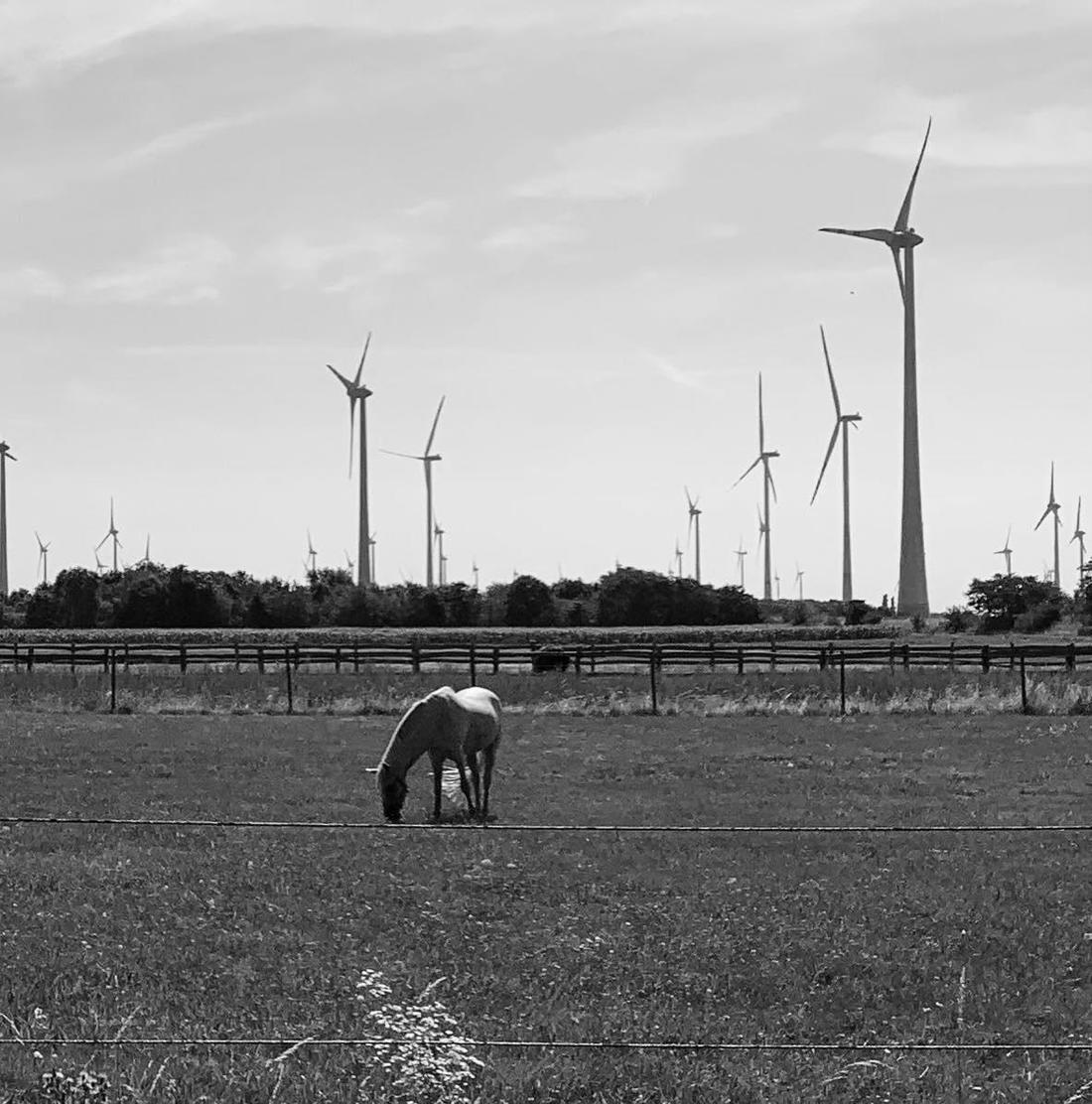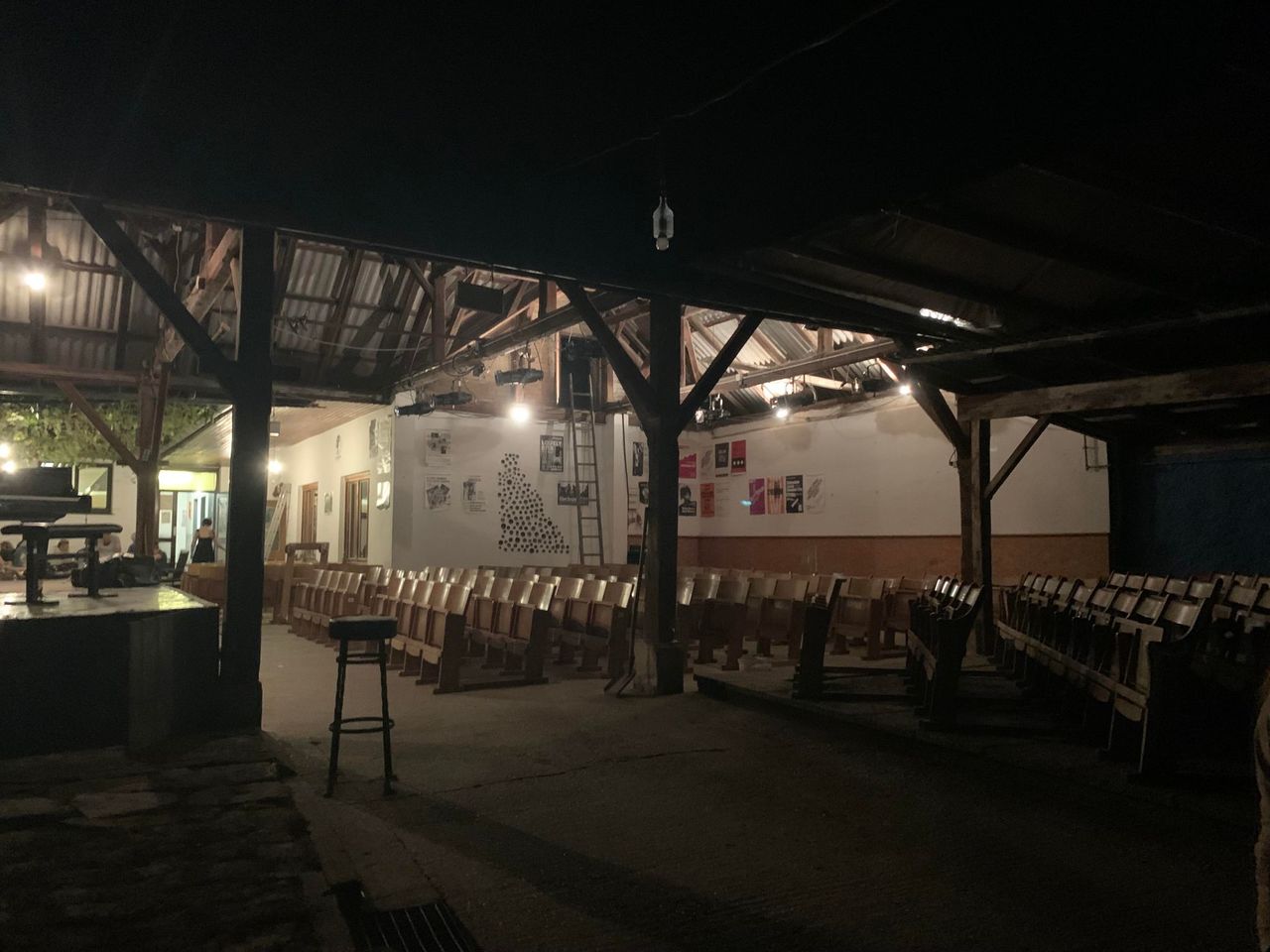
Photo: George Staicu
The festival opened with assured grace: Tobias Delius on tenor saxophone, Antonio Borghini on doublebass and Hamid Drake on drums and percussion. They were graceful and rowdy; my senses were not. My body was throbbing in agreement with the music and my head was nodding in one of the many rhythms on display, but I couldn’t pay attention the way I wanted, not immediately. After such a long time away from live music surrounded by people, my senses were overblown: so many sounds to hear, positions to sit in, directions to look, drinks to sip, heat to absorb, air to inhale, sounds to drink, air to look, absorption to absorb. And on.
Then I heard the deep Shepp in Delius’ playing and phased in. Ahhh. That’s right: the music, the answer, the marinade, the abstract truth actualized. Drake stomped down on the bassdrum pedal like a gauntlet; Delius opened his eyes cartoonishly wide and, with the saxophone at the edge of his mouth, side-squealed a full fizz of electron carbonation into the ambient atmosphere. There was no more question of not being in it or not being ready for it anymore – the music made that decision.
The trio was so in tune with each other that their improvisations felt like standards, like Monk and Nichols tunes were being invented in front of us. The downbeats that Drake emphasizes are so wildly unpredictable, yet so obvious after the fact. That’s propulsion my friend. Borghini’s bass isn’t just an anchor, either: he translated the melodies and rhythms firing into him from each side, balancing each savage grrrr with a peaceful purr.
During the break after the first band, all the troubles of the past years had dissipated into gratitude – to having not only the music back in our living ears, but people next to us adding depth to those echoes. If 4,000 people in the world are passionate about this music, and 400 of them show up in this same place every year to celebrate it, then the energy created is one big buttery strudel of biomass feedback.
Speaking of ardor, Luís Lopes’ electric guitar started off his duo with Fred Lonberg-Holm sounding like a broken organ; FLH responded with confusing radio static garble adjacent to his cello. The duo was like a bouquet of black and white flowers: honorable organics and dignified gestures but a little far from running water. FLH turned his back to the audience and drank white wine during a Lopes’ solo, after which he turned around, gestured to Lopes with both arms extended, announced “LUÍS LOPES!” ornately, and initiated smooth arco swarms sewn throughout the cello.
Gifts, grifts, and grits.
The first night ended with Elisabeth Harnik’s double trio: Didi Kern and Martin Brandlmayr on drums and percussion; Mikołaj Traszka and Mats Gustafsson on reeds; Harnik on piano. Real force and real momentum marked this set for me: I wanted to bathe in it. Unfortunately the delicacy of force was lost on the drunk group behind me, as their constant chatter overrode the ability to listen. I turned around, put up my hands and pleaded “Bitte!!,” to which a woman responded “Das ist nicht die Oper!!!” (This isn’t the opera.) My immediate thought was “No, it’s not the opera; it’s more actually more necessary to give this music respect.” While seething, my secondary thought was how hilariously ignorant she was, considering that the opera was actually a significantly rowdier place for hundreds of years, and that only recently has it become associated with quiet and decorum. In any case, her small coterie ruined the set for me. Chalk it up to another pandemic fallout: oblivious folks in attendance just looking for a night out, incapable of the awareness that 395 people around them are absolutely, attentively silent. When Gustafsson was in the middle of an intense, concentrated solo, his sudden explosion of a scream through the reed elicited shallow, imbecilic laughter from the revelers. When confronted with vitality, the weak and dull guffaw.
 Photos: Andrew Choate, George Staicu
Photos: Andrew Choate, George Staicu

 Photos: Andrew Choate, George Staicu
Photos: Andrew Choate, George Staicu

 Photos: Andrew Choate, George Staicu
Photos: Andrew Choate, George Staicu


